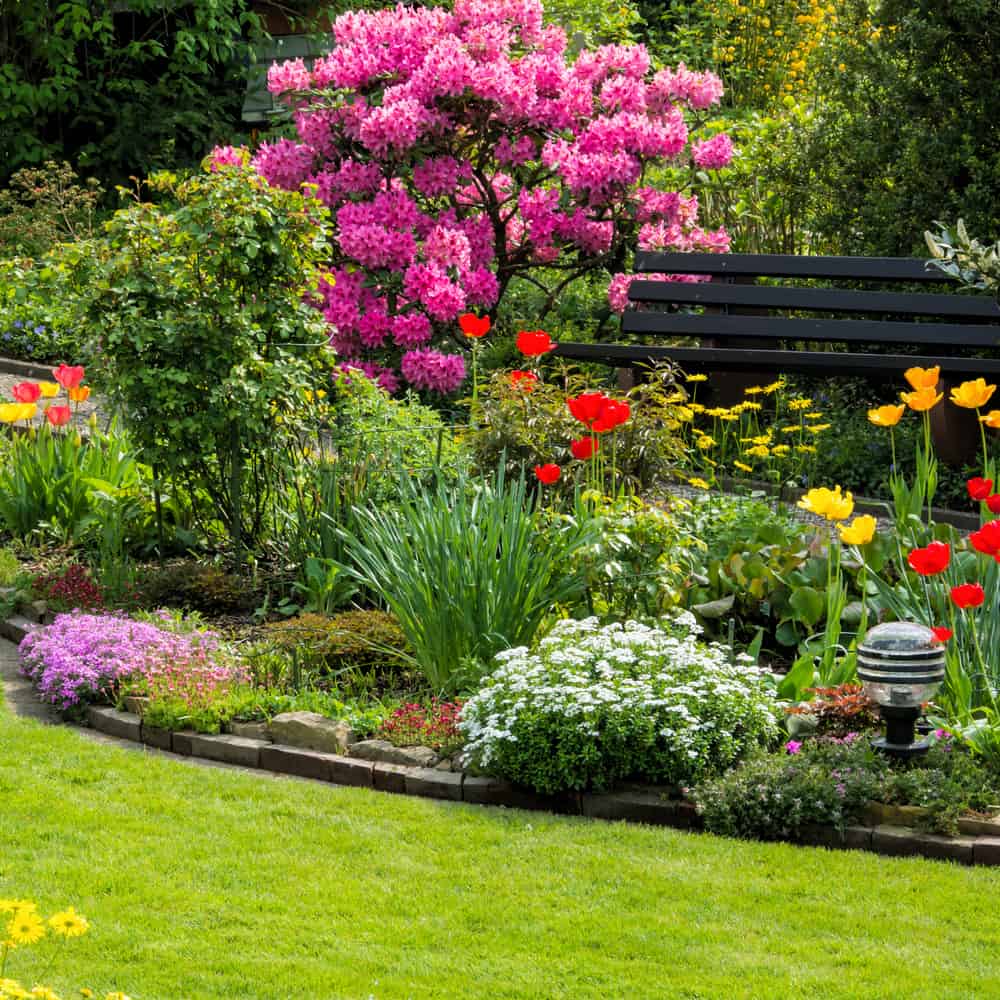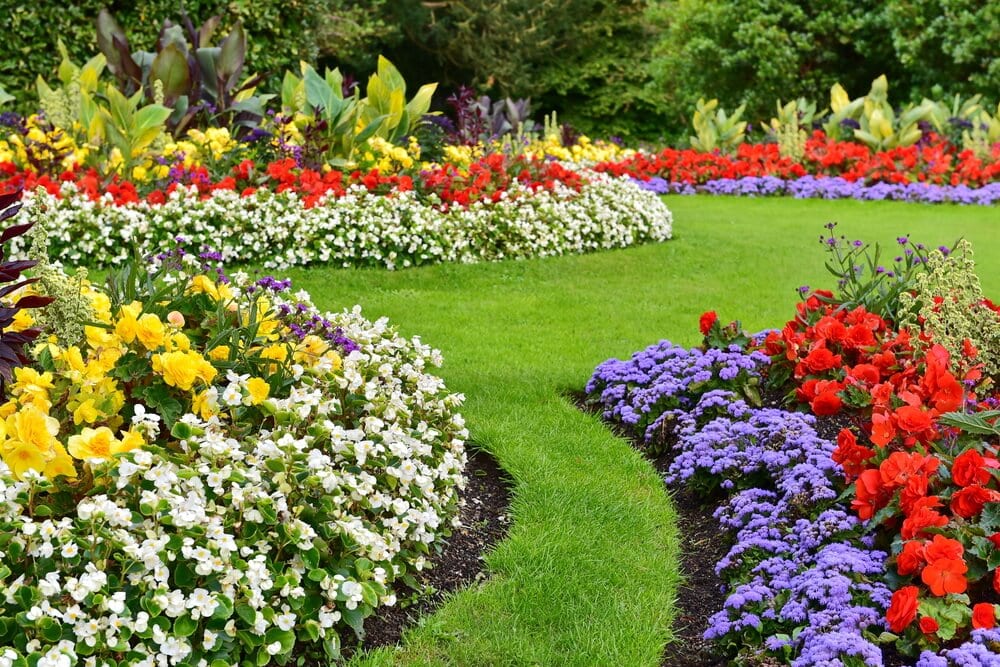Understanding Color Palettes

A color palette is the foundation of any garden design. It's not just about aesthetics; it's about creating a harmonious and inviting space that reflects your personal style and evokes specific emotions. Understanding the psychology of color and how it impacts mood and atmosphere is key to crafting a garden that truly resonates with you.
Psychological Effects of Color
Color plays a significant role in shaping our perceptions and influencing our moods. Each color carries specific associations and evokes distinct feelings. Here's a look at some common psychological effects of different colors:
- Red: Associated with energy, passion, and excitement. It can stimulate appetite and increase heart rate, making it a vibrant choice for a lively social space.
- Orange: A warm and cheerful color that promotes creativity and optimism. It can also stimulate appetite and create a sense of warmth and comfort.
- Yellow: Often associated with happiness, joy, and optimism. It can boost energy levels and create a sense of spaciousness, making it ideal for small gardens.
- Green: The color of nature, green evokes feelings of peace, tranquility, and renewal. It can promote relaxation and reduce stress, making it a popular choice for calming gardens.
- Blue: A calming and serene color that promotes feelings of peace, tranquility, and trust. It can also evoke a sense of spaciousness and create a calming atmosphere.
- Purple: Often associated with royalty, luxury, and spirituality. It can evoke feelings of mystery, creativity, and wisdom, making it a striking choice for a more formal garden.
- White: Represents purity, cleanliness, and simplicity. It can create a sense of spaciousness and enhance the brightness of other colors, making it a versatile choice for any garden.
- Black: Associated with sophistication, elegance, and mystery. It can create a dramatic and bold statement, adding depth and contrast to a garden design.
Choosing a Color Palette

Choosing the right color palette for your flower garden is a crucial step in creating a visually appealing and harmonious space. It's like painting a masterpiece, where each color plays a role in the overall composition.
Factors to Consider
Designing a flower garden with a specific color palette - When selecting your color palette, it's essential to consider your personal preferences, the existing landscape, and the architectural elements surrounding your garden. These factors will influence the overall mood and aesthetic of your garden.
- Personal Preference: What colors do you find calming, stimulating, or simply enjoyable? Do you prefer bold and vibrant hues or softer, more muted tones? Your garden should reflect your individual taste and create a space that brings you joy.
- Existing Landscape: The natural surroundings of your garden can inspire your color choices. For instance, if your garden is surrounded by lush green trees, consider incorporating complementary colors like reds, oranges, or yellows to create a vibrant contrast. If your garden is near a body of water, cool blues and greens will blend seamlessly with the existing environment.
- Architectural Elements: The color of your home, fences, or other structures can also influence your color palette. You can either complement these colors or create a contrasting effect. For example, if your house is painted a warm beige, you could incorporate shades of lavender, pink, and yellow into your garden for a harmonious look.
Designing a Sample Color Palette
Let's create a sample color palette based on a specific theme: a vibrant and cheerful garden. This palette will use bold and bright colors to create a sense of energy and joy.
The vibrant color palette will include:
- Yellow: A cheerful and sunny color, yellow can be incorporated through sunflowers, marigolds, and other bright yellow blooms.
- Orange: Orange adds warmth and energy to the garden, represented by zinnias, cosmos, and calendula.
- Red: Red is a bold and dramatic color that adds a touch of excitement. Consider adding red salvia, geraniums, or poppies to your garden.
- Purple: Purple provides a touch of royalty and sophistication. You can incorporate purple through lavender, irises, and petunias.
By combining these vibrant colors, you can create a flower garden that is bursting with life and energy.
Selecting Plants for Your Palette

Now that you have your color palette, it's time to choose the plants that will bring it to life. There are countless possibilities, and the key is to select plants that complement each other in terms of color, texture, and bloom time. Consider the size of your garden and the amount of sunlight it receives, as these factors will also influence your plant choices.
Plant Selection for Your Color Palette
To help you get started, here is a table of plants organized by color palette, along with their bloom time, size, and care requirements. This list is just a starting point, and there are many other options available depending on your specific needs and preferences.
| Plant Name | Bloom Color | Bloom Time | Plant Size | Care Requirements |
|---|---|---|---|---|
| Purple Coneflower (Echinacea purpurea) | Purple | Summer | 2-3 feet tall | Full sun to partial shade, well-drained soil, water regularly |
| Salvia (Salvia officinalis) | Blue | Summer | 1-2 feet tall | Full sun to partial shade, well-drained soil, water regularly |
| Yarrow (Achillea millefolium) | Yellow | Summer | 1-3 feet tall | Full sun to partial shade, well-drained soil, water regularly |
| Black-Eyed Susan (Rudbeckia hirta) | Yellow | Summer | 2-3 feet tall | Full sun, well-drained soil, water regularly |
| Zinnia (Zinnia elegans) | Red | Summer | 1-3 feet tall | Full sun, well-drained soil, water regularly |
| Cosmos (Cosmos bipinnatus) | Pink | Summer | 2-3 feet tall | Full sun, well-drained soil, water regularly |
Creating Visual Interest

A captivating flower garden isn't just about vibrant colors; it's about creating a visual journey that draws the eye and invites exploration. By strategically incorporating contrasting colors, adding depth with foliage and textures, and exploring color variations within plant species, you can craft a garden that's both beautiful and intriguing.
Using Contrasting Colors
Contrasting colors create focal points, drawing attention to specific areas of your garden. This can be achieved by using colors that are opposite each other on the color wheel, such as red and green, or blue and orange.
For instance, planting a vibrant red rose bush against a backdrop of lush green foliage will make the rose stand out, creating a captivating focal point. Similarly, a cluster of bright orange marigolds placed near a bed of blue hydrangeas will create a dynamic and eye-catching contrast.
The Role of Foliage and Textures
Foliage and textures play a crucial role in adding depth and dimension to your color palette. They provide a visual counterpoint to the flowers, creating a sense of balance and harmony.
Think of using different shades of green, from the deep emerald of hostas to the silvery-grey of lamb's ears. Adding textured foliage, such as the feathery plumes of ornamental grasses or the spiky leaves of ferns, further enhances the visual interest.
Incorporating Color Variations
Within a single plant species, you can explore a range of color variations to create a dynamic and layered effect. For example, roses come in a wide spectrum of colors, from the classic red and white to the more unusual yellow and orange.
Planting different varieties of roses with contrasting colors can create a stunning display, adding a sense of movement and visual intrigue to your garden. Similarly, you can incorporate different shades of blue in your garden by planting varieties of hydrangeas, delphiniums, and lavender.
Integrating Color with Garden Design
The chosen color palette isn't just for the flowers; it can be woven into the very fabric of your garden design, creating a cohesive and visually stunning experience.
Incorporating Color in Hardscaping
Hardscaping elements, such as paths, walls, and structures, provide a wonderful opportunity to extend your color palette beyond the blooms.
- Paths: Consider using gravel or stepping stones in shades that complement your chosen colors. For example, a garden with a palette of blues and purples could incorporate paths made of blue-grey gravel or stepping stones with a purple hue.
- Walls: Painted walls or fences can serve as a backdrop for your flowers, creating a sense of depth and visual harmony. If your palette features warm tones like oranges and reds, a terracotta wall would blend seamlessly.
- Structures: Arbors, pergolas, and even garden sheds can be painted in colors that echo your palette, providing visual interest and unifying the design. A garden with a palette of greens and yellows could feature a vibrant yellow pergola.
Using Color in Garden Lighting, Designing a flower garden with a specific color palette
Garden lighting can dramatically enhance the visual impact of your color palette, especially during the evening hours.
- Warm White Lights: These lights create a cozy and inviting atmosphere, highlighting the warm colors in your palette, such as reds, oranges, and yellows. They are ideal for illuminating flowering shrubs, trees, and pathways.
- Cool White Lights: These lights emphasize the cooler tones in your palette, such as blues, purples, and whites. They can be used to create a dramatic effect in areas with white or silver foliage or to highlight water features.
- Colored Lights: For a truly captivating experience, consider using colored lights that match or complement your palette. For example, blue lights can be used to highlight a bed of blue hydrangeas, while pink lights can accentuate a rose garden.
Creating a Seamless Flow of Color
To create a cohesive and visually pleasing garden, it's important to ensure a seamless flow of color throughout the design.
- Transitional Colors: Use transitional colors to bridge the gap between different areas of the garden. For example, a bed of pink roses could be followed by a bed of lavender, with a few purple-pink flowers in between to create a smooth transition.
- Repeating Colors: Repeat key colors throughout the garden to create a sense of unity. If your palette features a bold blue, incorporate it in your paths, flower choices, and even your garden furniture.
- Focal Points: Use color to create focal points in your garden. For example, a bed of bright red flowers could be placed at the end of a pathway, drawing the eye towards it.
FAQ Corner: Designing A Flower Garden With A Specific Color Palette
What are some popular color palettes for garden design?
Popular color palettes include monochromatic (using shades of a single color), analogous (using colors next to each other on the color wheel), complementary (using colors opposite each other on the color wheel), and triadic (using three colors evenly spaced on the color wheel).
How do I choose the right color palette for my garden?
Consider your personal preferences, the existing landscape, architectural elements, and the overall mood you want to create. For example, warm colors like reds and yellows can create a vibrant and energetic atmosphere, while cool colors like blues and greens can evoke a sense of calm and tranquility.
How can I create visual interest with color in my garden?
Use contrasting colors to create focal points, incorporate different foliage textures and colors, and utilize color variations within a single plant species to add depth and dimension.
